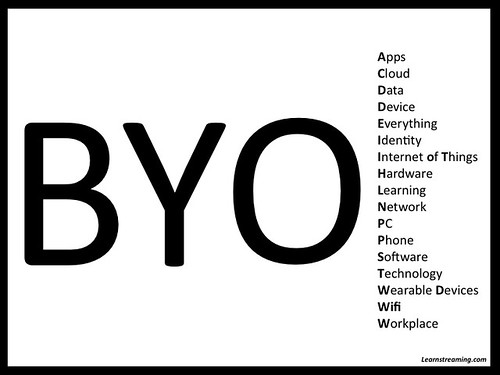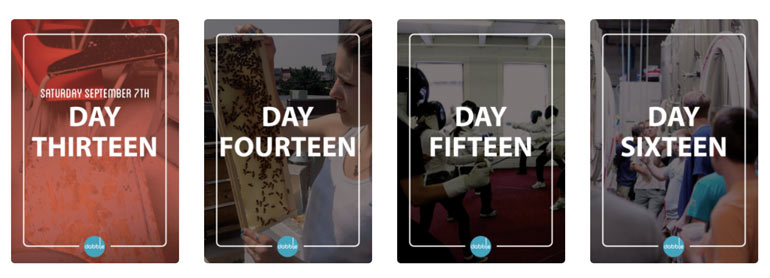
Small businesses represent more than 99.7 percent of all employers in the United States. How do you get yours off the ground and running? While I was taking Indie Peace from concept to company, I learned a few things—some the hard way.
Great idea, maestro!
You’ve identified a niche and are poised to meet a need. You’re prepping to deliver a wonderful product into a market you hopefully know like the back of your hand. Feels good, doesn’t it? The tips may provide some lift to your business wings during your entrepreneurial flight and ensure sustainability along the way. Good luck!
1. Warm up your wings before you leave the nest—or crash like a rock.
There are thousands of risks in starting a new company. Reducing those risks as much as possible beforehand is vital. It’s an unknown road, yes, but without the unknown, we don’t really have an entrepreneurial adventure on our hands. Foresee the ups and downs of your journey; no one else will do it for you, and it will also help you feel less stressed as you navigate uncharted territory. The clever predictions you’ve forged from your upfront due diligence will serve you well.
Sustainability is the operative word here. Once you get going, don’t stop. Anyone can start a company, but few can sustain one. The key is seeing every possible outcome and determining the required pivot you must make along the way. Remember, this is a journey, not a destination. What do the first two years look like? What are the major milestones? Do you have all you need to meet your goals? Validate your revenue model for roadblocks. Create a journey map for your business that highlights the first major achievements.
2. Welcome the opportunity to punch holes in your business—from everyone.
Entrepreneurial wisdom can be found in the strangest of places, but be careful where you seek it. Great advice can carry the side effect of fear, so maintain your energy throughout and let nobody dampen your flame. Most times, good advice from friends or family is exuberantly given from a personal obligation to see that you don’t fall on your face. Don’t let them take the wind out of your sails.
The worthiest advice can be given from those with defeatist attitudes and the worst advice can sometimes come from those who are most qualified to give it. The least qualified can sometimes be the best for challenging your assumptions early on. They also bring an added layer of creativity, as they’re not informed on the traditional roadblocks in your industry.
Validate what you see as real threats and have a system for solving them. Punching holes in your business will serve you extremely well. Leverage all the minds around you to mitigate risk while putting your pride aside.
3. Form your board of advisors: The Specialists.
Once you get past the embryonic phases of your business concept, one of the quickest and easiest ways to sidestep landmines is to form a team of advisors, ideally consisting of successful entrepreneurs who have made the journey at least once, and leverage their expertise and experiences often. Believe it or not, most entrepreneurs love helping other businesses. They miss the startup phase and like to join in the conversations. Start with one or two people that you can call at anytime for advice. Ask family members and friends to refer you to people they know. Look for “specialists” with knowledge in a specific area, such as obtaining funding or taking a new product to market. You don’t need anything formal and your “board” never even has to have official meetings. In fact, my personal board of advisors has never gathered together to meet since we’ve been in business, but I know I can call on each one of them to advise within their specialty. They really enjoy it.
4. Find your tribe.
Find the local, entrepreneurial tribes on the same journey as you and get involved. Attend all the events and discover the ones for you. Try entrepreneur.Meetup.com, Cofounderslab.com, LinkedIn entrepreneurial groups, and spend some time on Google searching for entrepreneur societies and small business groups in your city. If you cannot find anything, create your own. The university or college near your city will probably have an entrepreneur institute on campus. Contact the director and see how you can get involved.
Co-working facilities are my favorite places to connect locally. They cater to entrepreneurs and host mixers and business pitch nights to share ideas and contacts, and are great places to meet all types of local mavens; I met my developer at one. The most important thing is to be involved; after that, the possibilities will present themselves.
If your tribe is not present locally, find them digitally. Ask your social network to make recommendations.
5. Consider a doing well by doing good business model.
Many times, sadly, businesses are formed purely for making as much money as possible. Consider ways your company can give back versus take away; a business that assists in the collective cure versus the disease. Embed something you care about into your product or service. Don’t simply form a business to make something as cheaply as possible and sell it as expensively as possible. Create a product or service that will make you smile when you go to sleep at night. This will sustain you in your business and be the primary source of your passion.
This also makes it easy for you to grab people’s attentions and elevate their eagerness to help. New businesses usually cannot afford a lot of public relations (PR) and marketing. Here’s the great gift to building a business of purpose: people want to help the “good guys”—especially in the digital sphere. Enhance your original idea accordingly. What do you care about? How can you and your business give back? For instance, in Indie Peace’s case, we support organic farming practices in the U.S. by only buying organic cotton grown on U.S. soil. All of our garments are exclusively made from organic cotton, so we eliminate herbicides, pesticides, defoliants, and fungicides from our environment and water systems. One shirt purchased versus non-organic eliminates 4oz. of pesticide use. Perhaps there’s a way you can give a percentage of sales to a charity you love.
Unless you’re creating a new market or disrupting one, you must find a way to separate your company from the “noise.” Enhance it with a social or environmental impact model. Be the small business you would like to see more of in the world. This may be tougher in the beginning, but in the long run it will generate more positive PR and social media buzz. Entrepreneur Magazine ran a two-page spread on Indie Peace—free PR I likely wouldn’t have received without our environmental mission.
6. Sell the idea that your business is great in 30 seconds.
Nail down a succinct description of your business that you can communicate in 30 seconds or less. Know it by heart. Whether you’re taking to an investor, an advisor, or a random person at a football game, it’s essential that you describe your business consistently and effectively. This also helps sharpen the way you describe your company to press, video, social media, etc. You’ll use it more than you know, so really know your company and its reason to exist.
7. Create a business plan that you actually use.
Unless you need capital, you don’t really have to have a formal business plan. Business plans tend to be stagnant documents that are read once and then forgotten. Instead, create a living “planning document” that is continually updated and revised as needed, with next steps and actionable line items that can be instantly assigned as tasks to be performed. Keep a good two-page executive summary on your company that you constantly update and are able to send out to those who express interest. Find a cloud solution that allows you to store your business work in a central location and assign out tasks with ease to others working with you. This makes it easily accessible to anyone on your team and more apt to evolve with your business. It’s great for instantly adding new team members to the conversation as well.
8. If you need capital, multiply whatever you think you need by two, and then assume you won’t get it.
Raising capital may be the biggest challenge for businesses. It was definitely the hardest thing I’ve ever done in my business. Many entrepreneurs don’t want to ask for the amount of capital they really need because they don’t want to scare off potential investors, but then end up underfunded and unable to sustain the business. It also signals to the investor that you don’t know the industry and the operational requirements for your company. Break the real number out and try to raise it in tiers.
Make 100 percent sure that if you miss an investment round, you can still keep your company in business. Funding is a moving target; it usually won’t happen when you think it will. It’s vital to have strong insulation by assuming you won’t raise the capital at the intended time. There is no way to put a timeframe on when investment will occur, but you do know when your own money will run out. When you estimate the month you need to secure the next round of working capital, add another 8 months to that and find a way to keep things moving until then. See where you can cut some up-front costs to add this investment padding.
Start with a short list of where you can go to raise the first round of capital you need—friends, family, bank, etc. Learn the art of crowdfunding. Learn all the platforms (Kiva.org, Kickstarter.com, indiegogo.com, Fundable.com, Peerbackers.com). The recent Jumpstart Our Business Startups (JOBS) Act encourages funding of small businesses by making it easier to raise money from many small investors instead of a few large ones. It can help you bridge the gap in funding for things like prototypes before you get to larger investors. What happens on crowdfunding sites is also valuable for validating whether or not your concept really has wings. When you’re ready to approach larger investors, divide whatever you think your business is worth by 1.3. Entrepreneurs are notorious for overvaluing their companies. This keeps you on a level with what the investors will be thinking.
9. Compete in business competitions.
Search online for new business competitions; they’re easier to win than you think. I won two of them for Indie Peace and it helped us in a multitude of ways. Always keep this on your shortlist of funding options. There are usually fewer entrants than you might expect, and if you are coming in with an environmental or social impact model, your odds increase. Moreover, these competitions provide great marketing and PR.
10. Weatherproof your business.
Set up your business to function even if there is an economic downturn, or if you do not secure investment at the intended time. Have backup suppliers. We have Indie Peace to the point now where we don’t need investors, but when we first started out, our business model relied heavily on investment rounds being achieved. This put us in dire straits when the economy tanked a few years ago. Investors were hard to find, boutiques were going bankrupt, banks were frozen, and suppliers were in the danger zone as well. Determine what your initial needs are and then take all of them off the table and figure out how the business works on the alternatives you’ve selected.
11. Develop a multi-channel strategy. Pick the right megaphones.
Take advantage of multiple online channels for promoting your business, but pick the right ones. Get to know all of them: Facebook, Twitter, LinkedIn, Google+, Tumblr, Instagram, Pinterest, Stumbleupon, etc. There are endless choices and new ones appearing every day. Find a company similar to yours on each channel and study the moves they make. There are thousands of megaphones out there—let your voice be heard, but spend time in the right places as a lot of time wasting can occur here. As with anything, measure your effectiveness. What does success look like for you on these platforms?
12. Automate you and all there is to do. Focus on the important stuff.
Take advantage of the small business productivity applications available in the cloud—they’re some of the best things to happen to solo entrepreneurs. They’ll help you automate basics such as accounting, invoicing, file sharing, and tasks management. Plus, most of them have pay-as-you-go programs that grow with your business and keep costs manageable. Plus, the less time you spend on tasks, the more time you can devote to learning how to develop your business. You know all of the things you have to do. Find a comprehensive cloud solution that lets you get more of them done in less time with fewer headaches, and as your business grows you can easily plug in new team members. An all-in-one cloud solution helps you run lean, mean, and organized.
13. FLY FLY FLY.
There’s much work to be done and you must ultimately decide the point where concept must meet tactical execution. It’s go time or not. The odds are either in your favor or not. What are odds really, other than the direct correlation between your own entrepreneurial due diligence and ability to create alternatives around the roadblocks? Thank God for entrepreneurs and their relentless ability to adapt. You’ll drive on through the night and that’s what slaps the odds in the face.
14. Do the work.
Be a business even when no one is watching, because success and character are built when no one is watching. With no one breathing over your shoulder checking in for status reports, distraction is everywhere. Act like you go to work by setting your own hours and sticking to them. Dedicate work times and let no one or nothing affect them. Know each day what you are going to accomplish and actually accomplish it. Have a dedicated workspace away from your “outside work hours” spaces. As an entrepreneur, you are taking success into your own hands. Staying organized and on-task is vital. Be careful to watch your effect on the business. Sometimes the business owner is the biggest problem.
15. Unplug and unwind.
I still struggle with this today. Establish time for yourself unrelated to your business. You’ll find that some of the best new ideas and inspirations pop up when you’re not working. Remember to keep your head up and enjoy life along the way. You only have one life to live – live it well.
Lawton Ursrey is the CEO and Founder of Indie Peace, an environmentally responsible apparel company, and Product Marketing Manager of Sage One, a simple, online accounting application for small businesses.



















